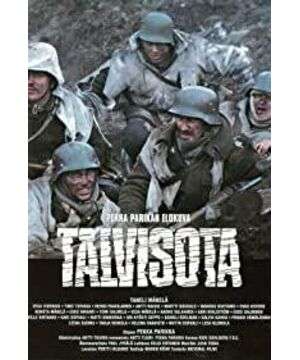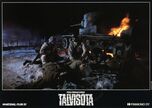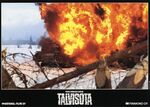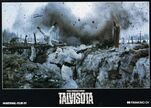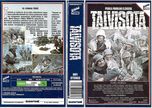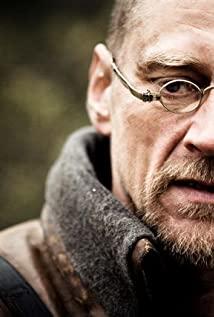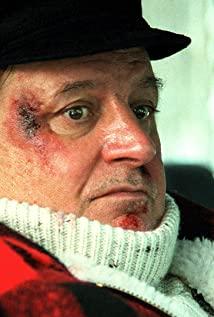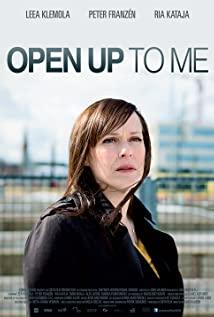After Poland was dismembered, Germany's superhuman combat power has not shocked Britain and France, but it has scared a temporary good friend - the Soviet Union. Stalin was well aware of Hitler's wolf ambitions. If Hitler turned his face, the old paper treaty would be bullshit, so he hurriedly wanted to establish a flank to protect the Soviet Union in the Baltic Sea. Estonia, Latvia, and Lithuania quickly agreed to the Soviet Union's request, while Finland was the only one who refused to let go. The love-hate relationship between Finland and the Soviet Union began in 1809. Before that, Finland was an eastern territory of Sweden. In the Northern War of 1700, Sweden was defeated by the Russian Empire in the European competition, and its hegemony was replaced by the latter. In 1808, the Finnish War broke out in Finland, and Russia took advantage of the victory to harvest a wave of territory and established the "Grand Duchy of Finland". During the First World War, the "October Revolution" overwhelmed Russia, and Finland took advantage of the chaos to declare independence. After independence, Finland was very close to Western European countries, especially Germany, and Lao Maozi worried every day whether the old king next door would go straight to Leningrad and snatch his own land and grain. On October 9, 1939, the Soviet Union began to negotiate with Finland. There were three main points: First, Finland ceded Hoagland and other islands and leased the port of Hanko to the Soviet Union for 30 years, so that the Soviet Union could deploy a naval base and block the sea leading to Leningrad. portal. Second, Finland's borders on the Karelian Isthmus moved back until Leningrad was out of range of the shells, covering Leningrad on land. Third, adjust the borders of the Rybach peninsula to protect Murmansk in the north of the Soviet Union. The above required Finland to cede 1,066 square miles of territory to the Soviet Union, and in exchange, the Soviet Union gave Finland a total of 2,134 square miles of territory from Repola and Porayorpi. The Soviet side considered itself to be full of sincerity, and the conditions it offered were objectively favorable to Finland. But it was this Hanko port that made the Finnish authorities suspicious of the Soviet Union's little ninety-nine. If you can't get it by chance, you can only take it. Today we are going to talk about this "Soviet-Finnish War". The film tells the story of a seemingly weak Finland defending its homeland from the perspective of several Finnish soldiers.
At the beginning of the film, the scenes of endless Finnish fields and snow-capped battlefields are connected in series, telling us that the current frontiers of Finland are guarded by these Finnish soldiers with their lives. Finland, after intending to reject the Soviet Union, used its national strength to expand its own armed forces. These newly recruited men are soldiers who retired from World War I, milk workers, drunkards, sex embryos, and ordinary people. On November 26, 1939, the Soviet Red Army fired seven artillery shells at Manila, the head of a small Russian village on the border. Finland and the Soviet Union wanted to investigate the whole story together. Soviet Union: "I don't listen, I don't listen." Then they launched an invasion of Finland on the grounds of the Manila shelling. Movie 55', just like the real thing, the war started suddenly. But the initial advance of the Red Army came to a halt. Marshal Mannerheim of Finland has concentrated all of his reserves in the extreme south, and it is clear that he has made the right bet. Coupled with the swish of the cold wind in Finland in winter, the Mannerheim line of defense is rock-solid, and Finland can be said to have the right place at the right time. But it was the flesh and blood of Finnish soldiers that prevented the wealthy Soviet Red Army from pushing the tower. (The war scene is too bloody and cruel, I don't want to describe it, you can watch the movie by yourself)
Molotov, the Soviet foreign minister, sophistry of the "molotov cocktails" thrown over the Finnish metropolis as "bread" dropped by starving workers in the city. These Russians are collectively called "Molotov's Bread Basket". To come and not to come is indecent. Finns who knew the etiquette used glass bottles and other containers to hold incendiary bottles containing petroleum, phosphorus, and combustion accelerants, and gave these "Molotov cocktails" to the Soviet Red Army for tasting.
This group of Finnish soldiers were also just ordinary people who wanted peace and quiet. Looking at the Soviet planes in the sky and the light machine guns in their hands, they mocked themselves to have a "race to find the first Finnish plane". On Stalin's birthday, in the Red Army's position, there were singing and dancing, and Finland teased that he wanted to send congratulations with artillery fire. Christmas under fire, they sing hymns and pray for peace. However, they regard every day as the last day, "as long as there are people, we will fight to the end".
Compared with the swamps and forests in the north and the waistline, the best route to attack Finland is the Karedi Isthmus. However, this route was blocked by the Mannheim Line, and the six reserve divisions of Finland were concentrated here from the beginning, and the Soviet Red Army could not conquer it for a long time. On February 1, 1940, the Soviet Union concentrated 14 divisions and launched a powerful offensive. The long-term persistence has exhausted the strength of the Finnish side, the Mannheim line of defense has finally been opened, and the final collapse of Finland is also a foregone conclusion.
The war ended in a disastrous victory for the Soviet Union. In the war-torn Soviet Red Army, the Finnish soldiers immediately put down their weapons, sighed, and finally stopped fighting.
On March 13, 1940, Finland signed the "Moscow Treaty". In addition to the original conditions, it also ceded the two regions of Sala and Kusamou, the entire Karelia Peninsula, and the Finnish part of the Fischer Peninsula. . But this time, the Soviet Union lost face and sanity. On the one hand, in the West, Finland has received widespread sympathy. Britain and France, in particular, sat at home and strongly condemned the Soviet Union's aggression. On the other hand, the Soviet Union suffered heavy casualties in this battle. A Finnish soldier fell and was backed by ten Soviet Red Army troops. The Soviet red soldiers in tan uniforms were like silly roe deer in the white snow, shooting every shot. The sniper with the most kills on record was the "white death" in this battle, Simon Haya, who shot and killed 542 Soviet troops with the Finnish version of the Mosin Nagant sniper rifle. Worst of all, after this war, the Soviet Union left a soft persimmon image to Western governments, especially Germany, which had huge consequences the following year. Finland, who originally intended to remain neutral, understood the situation that her father did not care for her mother and did not love her mother, so she found a godfather for herself, and completely fell to the Axis powers. With a backer, Finland intends to retake the land lost in the Winter War and extend further into Karelia to create the Great Finnish state. On June 25, 1941, Finland, with the help of godfather Germany, launched a "continued war" against the Soviet Union.
To becontinued. If you want to know more WWII stories and watch more WWII movies, scan the QR code below to get a fresh push every Friday.
View more about The Winter War reviews


